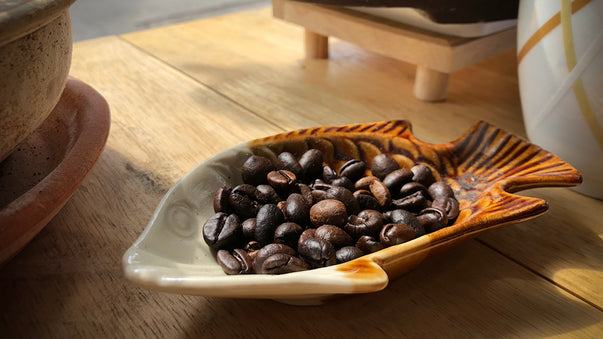The Internet of Neuro-Electronics

An international team of scientists has created a hybrid neural network of biological and artificial neurons. The scientists have shown that natural and artificial neurons are able to communicate with each other, not only locally but also remotely over the Internet. And the scientists anticipate that their approach will accelerate neural interfaces research.
"We are very excited with this new development," says research leader Themis Prodromakis in a press release from University of Southampton. "On one side it sets the basis for a novel scenario that was never encountered during natural evolution, where biological and artificial neurons are linked together and communicate across global networks; laying the foundations for the Internet of Neuro-electronics. On the other hand, it brings new prospects to neuroprosthetic technologies, paving the way towards research into replacing dysfunctional parts of the brain with AI chips."
This seems to have even more futuristic implications. It could bring us closer to Nexus, the fictional technology imagined by Ramez Naam and listed in the top position of our article on the “Top 22 Smart Drugs in Science Fiction.” Nexus nodes are capable of wireless communications with other Nexus nodes in the same brain, or even in another brain. Therefore, Nexus boosts in-brain communications and coherence, and opens the door to telepathic communications and the fusion of single minds into group minds.
Of course, we are following rumors and (scarce) news about Elon Musk’s related Neuralink technology. Musk promises “awesome” news soon, as reported by CNET.
Natural and Artificial Neurons Link Over Internet
Scientists at University of Southampton, University of Padova, University of Zurich, and ETH Zurich have found ways to enable the nervous system and artificial neurons to communicate with each other through a neuro-electronic interface over the Internet.
A study published in Nature Scientific Reports describes how the scientists created a hybrid neural network.
Biological and artificial neurons in different parts of the world were able to communicate with each other over the Internet through a hub of artificial synapses. It was made using cutting-edge nanotechnology.
Nanoparticles Tag Cancer Cells for Destruction
Scientists at Johns Hopkins Medicine have designed and successfully tested an experimental, super small package able to deliver molecular signals that tag implanted human cancer cells in mice and make them visible for destruction by the animals' immune systems.
A research paper published in PNAS outlines how the scientists created injectable polymer-based nanoparticles able to deliver proteins and genetic material that attracts immune system cells “like a magnet.”
The new method was developed, say the researchers, to deliver an immune system 'uncloaking' device directly to cancer cells.
Nanoparticles Designed to Target Cancer Cells
Researchers at Helmholtz-Zentrum Dresden-Rossendorf (HZDR) and FU Berlin have produced nanoparticles that are designed to specifically target cancer cells. The nanoparticles can navigate directly to the tumor cells and enable visualization using advanced imaging techniques.
A paper published in Small reports how the researchers were able to effectively guide the nanoparticles to the cancer cells in both petri dishes and laboratory animals.
The next step is to combine the new technique with therapeutic approaches.
Autoantibodies Act as Body's Own Antidepressants
Researchers at Max Planck Institute have discovered that, when certain “NMDA autoantibodies” are able to enter the brain to act on specific receptors, people suffer less depression and anxiety. These autoantibodies are clearly acting as the body's own antidepressants.
A study published in Molecular Psychiatry reports that laboratory mice with a more permeable blood-brain barrier and NMDA receptor autoantibodies in the brain were significantly more mobile and less depressed during times of chronic stress than others with an intact blood-brain barrier.
Similarly, an analysis of a large patient database revealed that people with NMDA autoantibodies and a permeable blood-brain barrier also suffered significantly less depression and anxiety.
ALS Research Advances on Multiple Fronts
Scientists at University of Miami have found that the addition of dietary L-serine, a naturally occurring amino acid necessary for formation of proteins and nerve cells, delayed signs of amyotrophic lateral sclerosis (ALS) in an animal study. This was shown in a study published in Journal of Neuropathology & Experimental Neurology.
In related ALS news, researchers at University of Illinois have developed a new CRISPR gene-editing methodology able to deactivate one of the genes responsible for an inherited form of amyotrophic lateral sclerosis. This was shown in a study published in Molecular Therapy.
Toothpaste May Prevent Heart Attacks and Strokes
Scientists at Florida Atlantic University have suggested that a plaque-identifying toothpaste could help prevent heart attacks and strokes.
The study was published in The American Journal of Medicine. It reports the results of a randomized pilot trial of Plaque HD. Plaque HD is a toothpaste that identifies plaque so that it can be removed with directed brushing.
The study showed that the toothpaste produced a statistically significant reduction in C-reactive protein. C-reactive protein is a sensitive marker for future risks of heart attacks and strokes.
More Articles
Don't miss a beat! In our Pulse Newsletter, Thrivous curates the most important news on health science and human enhancement, so you can stay informed without wasting time on hype and trivia. It's part of the free Thrivous newsletter. Subscribe now to receive email about human enhancement, nootropics, and geroprotectors, as well as company news and deals.
Read more articles at Thrivous, the human enhancement company. You can browse recent articles in Thrivous Views. See other Pulse Newsletter articles. Or check out an article below.
-
New Studies on Benefits of Caffeine and Low-Dose Omega 3
Caffeine and Omega 3 are hot topics in research. Because many benefits have been identified, research is now focused on ...
-
Deep Learning AI Finds Powerful Antibiotics
In a breakthrough for Artificial Intelligence (AI) application to drug discovery, machine learning algorithms have identified a new, very effective ...


